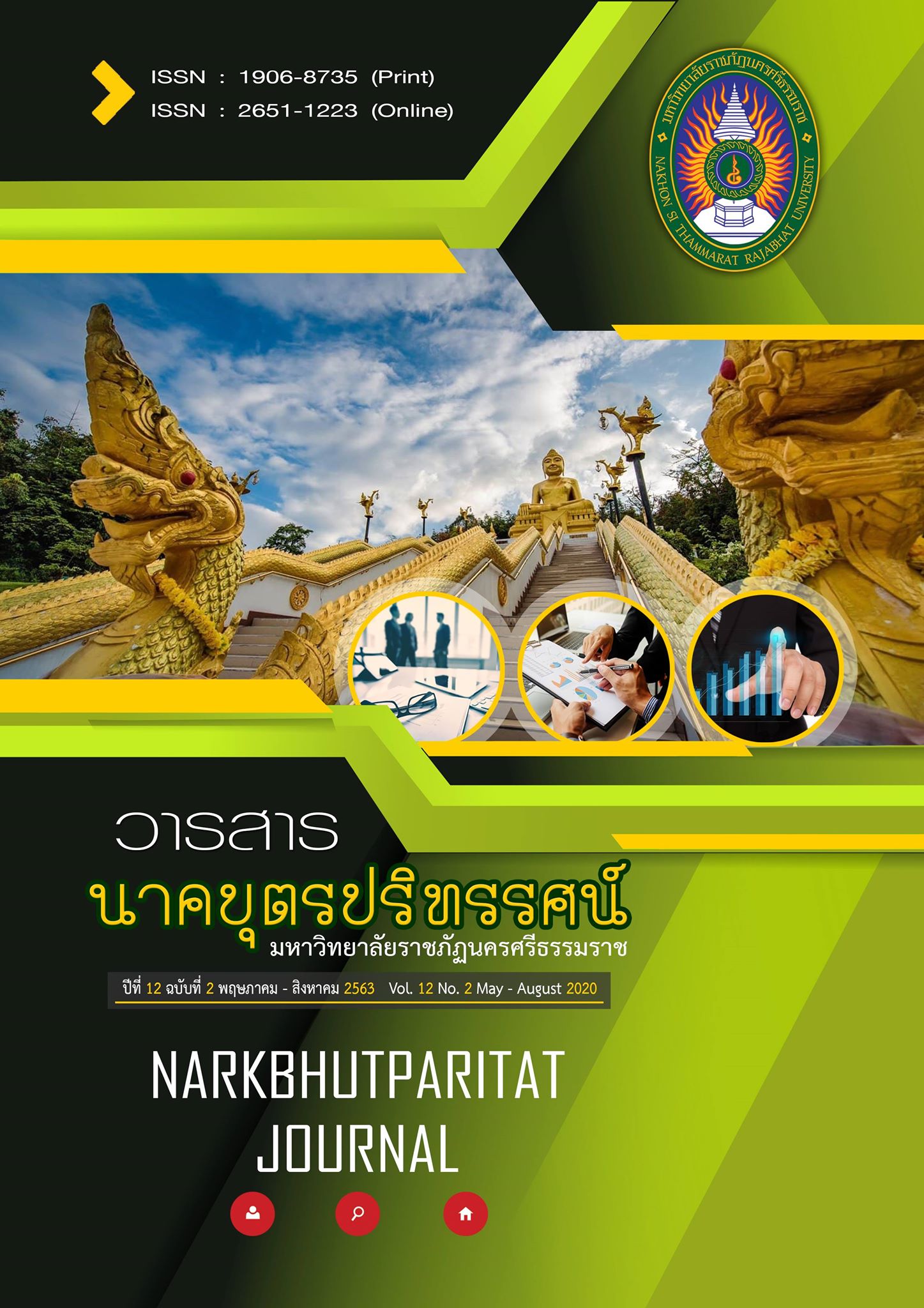The Impact of the Greater Mekong Subregion East-West Economic Corridor on Agricultural Economic Growth in Mukdahan Province
Main Article Content
บทคัดย่อ
The Research objectives were to study 1) the geography, economy, and society of Mukdahan province, and 2) the Impact of the Greater Mekong Subregion East-West Economic Corridor on Agricultural Economic Growth in Mukdahan Province. The secondary data were collected from the official database. The data analysis composed of 1) the measurement of economic level, 2) the measurement of economic growth, 3) Gross Provincial Product per capita (GPP per capita) and 4) the econometric model of time trend analysis. The findings were 1) the Mukdahan land size was 4,507 square kilometers with the border of Laos People’s Republic, the north border connected with Nakhonpanom and Sakolnakon Province, the south border connected with Yasothorn Province, and the east border connected with of Laos People’s Republic with was bordered by the Mekong River. Mukdahan economy relied on both agricultural and non-agricultural sectors. Mukdahan’s population held the educational level ranged from primary to bachelor's degree with the ration of students per teacher of 19:1. People were Buddha of 96.80 percent, have strong belief in customs and folkways, and 2) the greater Mekong Subregion East-West Economic Corridor (GMS-EWEC) had a positive impact on the agricultural economic growth with the average growth rate of agricultural economic of 8.34 percent from 1999 to 2018, led to continuously agricultural economic growth, had a positive impact on the Mukdahan’s Gross Provincial Product per capita (GPP per capita) continuously. Moreover; it still had a positive impact on the entire Mukdahan’s Gross Provincial Product. It could be concluded that the GMS-EWEC obviously had a positive impact on Mukdahan’s Provincial Gross Product.
Article Details
เอกสารอ้างอิง
Asia Development Bank. (2019). Strategic and Action Plan for the Greater Mekong Subregion
East-West Economic Corridor. Manila: Author.
Bank of Thailand. (2019). The Important Indicators of Economy. Retrieved 2019, November
, form https://www.bot.or.th/Thai/Statistics/Indicators/Docs/indicators.pdf. (In Thai)
________. (2019). The Indicators of Macro Economy. Retrieved 2019, December 10,
From http://www2.bot.or.th/statistics/ReportPage.aspx?reportID=409. (In Thai)
________. (2019). The Report of Economy and Finance. Retrieved 2020, January 25, from
Japan Bank for International Cooperation. (2019). Japan’s Role in The Greater Mekong
Subregion East-West Economic Corridor. Tokyo: Author.
Michael, P. Todaro. (1992). Economics for a Developing World (10th ed.) New York:
Pearson Publishing.
Michael, T. and Stephen S. (2014). Economic Development (12th Ed.) New York: Pearson
Publishing.
Mukdahan Information Center. (2019). The Map of Mukdahan Retrieved 2019, September 20, form http://www.mukdahan.go.th/gandurntang.htm (In Thai)
The Center of One Stop Service of Mukdahan Province. (2019). Mukdahan Province : The City
of Trade, Agriculture, and Tourism, The Linkage of Asian. Retrieved 2019, November 1, from http://www.mukdahan.go.th/mukdahan.php. (In Thai)
The Department of International Economic, Ministry of Foreign Affair. (2019). The Greater Mekong Subregion East-West Economic Corridor. Retrieved 2019, September 18, form https://www.fmprc.gov.cn/mfa_eng/
The Division of Economic Relationship, Department of International Economic, Ministry of Foreign Affair. (2019). The Greater Mekong Subregion East-West Economic Corridor. Retrieved 2019, September 18, form https://dea.gov.in/divisionbranch/international-economic-relations-division
The Division of Relationship Promotion and Cooperation Department of International
Economic. (2019). The Greater Mekong Subregion East-West Economic Corridor.
Bangkok: Author.
The Office of National Economic and Social Development of Thailand. (2019). The Measurement of Regional and Province Product with Chain Value.
Retrieved 2019, December 20, from http://www.nesdb.go.th/. (In Thai)
_______. (2019). The Regional Product and Provinces with Times Series of Chain Value.
Retrieved 2020, January 12, from http://www.nesdb.go.th/. (In Thai)
_______. (2019). The Regional Product and Provinces with the Constant Base Value.
Retrieved 2020, January 12, from http://www.nesdb.go.th/. (In Thai)
Wittayakorn-Puripunpinyoo, A. (2016). The Concept and Theory of Economic Development,
the 4th Chapter, The Text book of Thai Society and Agricultural Extension Administration and Development. Nontaburi: Sukhothai Thammathirat Open University School of Agriculture and Co-operatives. (In Thai)


